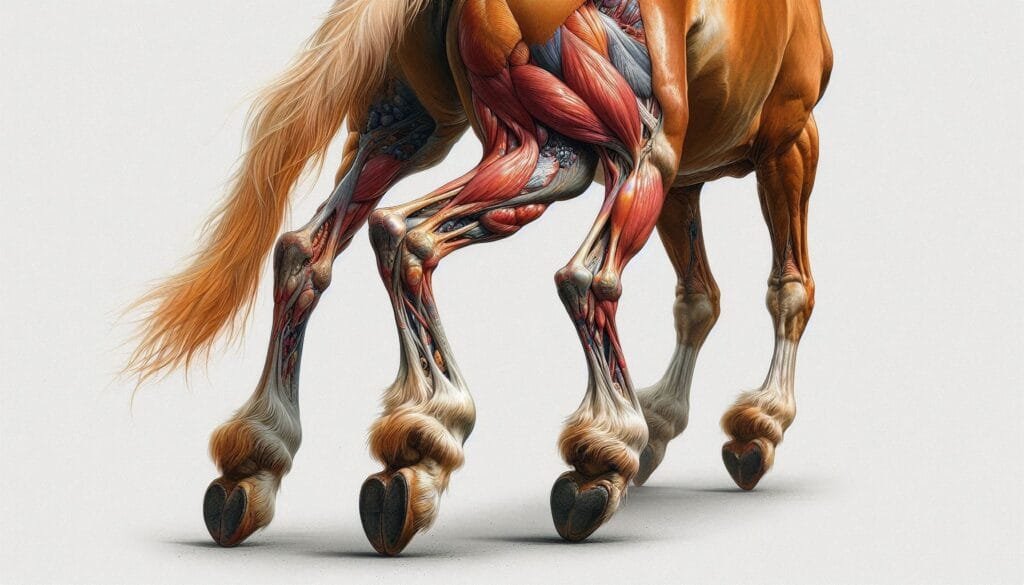Hind Limbs

Introduction to Hind Limbs
Hind limbs are essential components of vertebrate anatomy. They play a crucial role in locomotion, balance, and various activities. In this article, we will explore the structure and function of hind limbs, their adaptations in different species, and their evolutionary significance.
What Are Hind Limbs?
Hind limbs refer to the paired appendages located at the back of an animal’s body. In quadrupeds like dogs and cats, these are known as hind legs. In bipedal organisms such as humans, they correspond to the legs. Understanding the anatomy of hind limbs helps us appreciate their functions in movement and survival.
The Anatomy of Hind Limbs
Hind limbs consist of several key components:
Bones
The primary bones in human hind limbs include:
- Femur: The thigh bone is the longest bone in the body.
- Patella: Also known as the kneecap, it protects the knee joint.
- Tibia: The larger bone in the lower leg that bears weight.
- Fibula: A thinner bone that runs parallel to the tibia.
In other species, such as frogs or birds, the bone structure varies significantly based on their locomotion needs. For more detailed anatomical insights, you can refer to this article on vertebrate limb anatomy.
Muscles
Muscles in hind limbs facilitate movement. Key muscle groups include:
- Quadriceps: Located at the front of the thigh; crucial for extending the knee.
- Hamstrings: Located at the back of the thigh; important for bending the knee.
- Calf muscles: Essential for walking and running.
These muscle groups work together to enable various movements such as walking, running, jumping, and climbing.
The Function of Hind Limbs
Hind limbs serve multiple functions depending on the species:
Locomotion
The primary role of hind limbs is locomotion. Animals use them to walk, run, jump, or swim. For instance:
- Humans: Use their legs for walking and running.
- Frogs: Utilize powerful hind legs for jumping.
- Birds: Use their legs for perching and walking.
For more information on how different animals move using their hind limbs, check out this resource on animal locomotion.
Balance and Stability
Hind limbs also contribute to balance. They provide stability when standing or moving. For example:
- In humans, proper posture relies heavily on strong leg muscles.
- In animals like horses, hind limbs help maintain balance during fast movements.
Adaptations of Hind Limbs Across Species
Different species exhibit unique adaptations in their hind limbs based on their environments and lifestyles.
Frogs
Frogs have long and powerful hind legs adapted for jumping. Their muscles are well-developed for explosive movements. This adaptation allows them to escape predators quickly. You can learn more about frog adaptations here.
Birds
Birds have evolved hind limbs that support perching and walking. Their bones are lightweight yet strong. Additionally, some birds have developed unique features like webbed feet for swimming. For further reading on bird limb adaptations, visit this article.
Mustelids (e.g., Weasels and Otters)
Mustelids display diverse adaptations in their hind limbs based on their habitats. For instance:
- Weasels have agile legs suited for hunting small prey.
- Otters possess webbed feet that aid in swimming.
You can find more about mustelid adaptations here.
Evolutionary Significance of Hind Limbs
The evolution of hind limbs illustrates how species adapt to their environments over time.
Aquatic Adaptations
In some aquatic species like dolphins, hind limb structures can be observed during embryonic stages but degenerate before birth. This phenomenon reflects an evolutionary shift where hind limbs become non-functional in water-based environments. For insights into this evolutionary process, refer to this study.
Terrestrial Adaptations
On land, animals have developed various limb structures that enhance mobility and survival skills. For example:
- Cheetahs have elongated hind legs that allow them to run at incredible speeds.
- Kangaroos possess strong hind legs designed for powerful jumps.
These adaptations demonstrate how natural selection shapes limb morphology to fit ecological niches.
Common Disorders Affecting Hind Limbs
Just like any other part of the body, hind limbs can be affected by various disorders:
Arthritis
Arthritis is a common condition affecting joints in both humans and animals. It leads to pain and reduced mobility in hind limbs.
Hip Dysplasia
This genetic condition affects hip joints in dogs and can lead to severe pain and mobility issues.
For more information on common disorders affecting limb health, check out this resource.
Conclusion
Hind limbs are vital for movement and adaptation across various species. Their structure varies significantly based on environmental needs and evolutionary history. Understanding these differences helps us appreciate the complexity of vertebrate anatomy and evolution.
More from Veterinary Anatomy:





Responses